The mouthparts are the mouths of insects, responsible for feeding. Insect food comes from a wide range of sources, including solid and liquid, exposed and deeply hidden. Therefore, insects have a variety of corresponding feeding methods and mouthpart types.
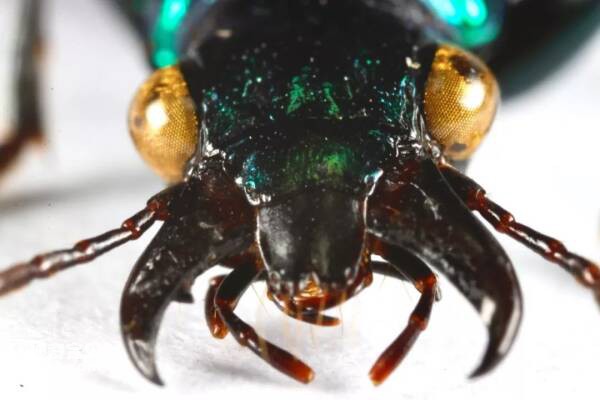
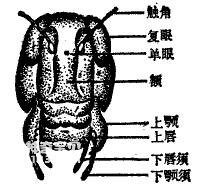
This type of mouthpart is relatively typical among insects, and other types have evolved from this type. Chewing mouthparts are used for eating solid food. It has the same upper lip, lower lip, palate (teeth) and tongue as the human mouth, but it also has lower labial palps, lower jaw and mandibular palps. There are sharp teeth at the front of the upper jaw, called the incisal area, used to cut food; there is a rough surface at the back, called the grinding area, used to grind food. Therefore, the arrangement and function of insect upper jaws are similar to those of human teeth. The labial palps, mandible and mandibular palps are sensory and auxiliary feeding organs, and the labial palps and mandibular palps have the functions of taste, smell and touch. The mouthparts of locusts are representatives of chewing mouthparts. In addition, adults and larvae of Coleoptera, adults of Neuroptera, larvae of Lepidoptera, and most adults of Hymenoptera also have chewing mouthparts.
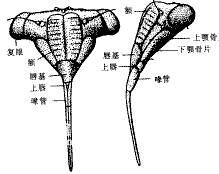
The mouthparts of insects that suck animal blood and plant juices are like a hollow injection needle. When feeding, the needle-shaped mouthparts are inserted into the tissues of animals and plants to suck out the juices. This type of mouthparts is called a piercing-sucking mouthpart. . The structure of the sucking mouthparts is very clever. It actually extends the original lower lip into a beak that collects or protects the stylet, and part of the upper and lower jaws evolve into slender stylets. The number of stylets varies, cicadas have 4, lice have 3, and mosquitoes have 6 stylets. In addition, piercing and sucking mouthparts must also have a special suction structure-esophageal pump.
Thrips also have piercing-sucking mouthparts, but their mouthparts are different from typical piercing-sucking mouthparts. The head of the thrips protrudes downward, and its upper and lower lips form a short beak, which contains the tongue, left upper jaw and lower jaw stylet. The right upper jaw has degenerated or disappeared. When feeding, the stylet is inserted into the plant tissue, scratches it, and then inhales the juice into the digestive tract after it flows out. This special piercing-sucking mouthpart is often called a rasp-sucking mouthpart.
Neuroptera larvae (aphid lions, ant lions) have predatory sucking mouthparts, referred to as sucking mouthparts, which are characterized by the upper and lower jaws protruding from both sides in front of the head, resembling a pair of sickles. This type of mouthpart consists of the left and right upper and lower jaws respectively forming a piercing and sucking structure, so it is often called a double piercing and sucking mouthpart (see left picture).
Insects with piercing-sucking mouthparts are often accompanied by the spread of diseases during the feeding process, causing epidemic diseases in animals and plants. For example, aphids and isopteran insects transmit plant virus diseases, and mosquitoes, fleas, etc. transmit malaria.
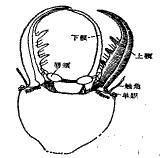
Siphonic mouthparts are unique to butterflies and moths. They can suck nectar deep into flowers. This type of mouthparts looks like a clockwork spring with a hollow center. It can be stretched out when in use and coiled when not in use. stand up. This coracoid canal is formed by the extremely extended outer jaw lobes of the left and right mandibles that are then brought together. It is made up of numerous ossified rings that are closely arranged. There are membranes connecting the rings, so they can be extended and flexed. Only a well-developed lower lip barbel remains on the lower lip. This structure is generally used to suck nectar, water, juices from decaying animals and plants, and some also suck mature fruits.

Flies eat by sucking and licking, so their mouthparts resemble a mushroom head. The beak is specialized from the lower lip. Its front wall is concave downward longitudinally into a labial groove. The upper lip covers it in the shape of a knife. A long and flat tongue is hidden in the groove. The tongue and groove form a food tract. The shape of the beak is composed of a mainly membranous base beak, a tubular middle beak, and an end beak that is divided into two lobes at the end (the labial valve). There are a series of annular grooves on the labial valve, and the annular grooves are concentrated on the central gap - the anterior mouth. There are teeth between the annular grooves near the anterior oral cavity, which are called prestomal teeth.
When taking food, the two labial flaps spread flatly against the food so that the gap in the annular groove comes into contact with the food. The liquid food flows along the annular groove toward the front mouth and enters the food canal. The lips can also be flipped back to expose the front teeth, which can be used to scrape solid food and inhale food particles and liquids together. Lick-sucking mouthparts are unique to adult flies.
The mouthparts of fly larvae are different from those of adults. Their mouthparts are very degraded. Only a pair of mouth hooks can be seen, which are used to scratch food and then absorb juice and solid debris. This type of mouthparts is called a scraping-sucking mouthpart.
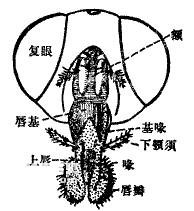
This type of mouthparts is possessed by several blood-sucking flies of the order Diptera. Its upper jaw is specialized into a flat and wide blade shape, which can cut the animal's skin like scissors, allowing blood to flow out of the wound. The lower jaw is extended into a needle shape, and it twitches up and down to keep the wound open. The end of the lower lip expands into a labrum. , the structure is the same as the sucking mouthparts. When the lip flap is attached to the wound, the exuded blood is sucked into the food tract through the annular groove on the lip flap.
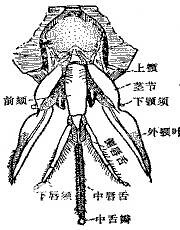
As the name suggests, chewing-sucking mouthparts can chew solid food and absorb liquid food, and are possessed by some higher Hymenoptera insects. The mouthparts of bees are typical representatives of this type of mouthparts. Its upper jaw is similar to chewing mouthparts, used for chewing pollen and foraging. Its lower jaw and lower lip form a sucking beak. The bee's beak is formed by merging the lower jaw and lower lip only when feeding, and is separated and folded under the head when not in use. At this time, the upper jaw can play the role of chewing.
animal tags: Insects mouth mouthparts type
We created this article in conjunction with AI technology, then made sure it was fact-checked and edited by a Animals Top editor.